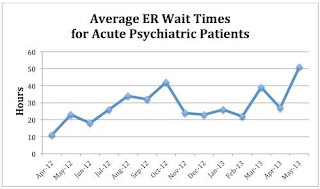
In psychotherapy, the activity of "mentalizing" is where the most benefit accrues.
"Mentalizing" is the making sense of things. Socrates said that an unexamined life is not worth living. This examining, to which Socrates refers, is what contemporary psychologists call "mentalizing."
Mentalizing is intimately linked to self understanding, the understanding of others, a sense of agency, and enhancement of social skills.
Mentalizing is a key feature of emotional intelligence which is made up of self knowledge, self regulation, empathy, motivation, and constructive and satisfying interactions with others.
In the model of narrative therapy, the narrative operates at three levels: the landscape of action, the landscape of meaning, and the landscape of identity.
The the landscape of action describes the cast of characters involved in certain activities and events over a period of time. The landscape of action is the plot line.
Superimposed on the landscape of action is the landscape of meaning. After the landscape of action is described, the story is told, one can ask, "What does it mean? What's the moral of the story? What's to be learned from this story? What do you make of it?" This is the therapeutic pay dirt.
At the third level, the landscape of identity, one can consider if this is what happened (the landscape of action), and this is what it means (the landscape of meaning), what, then, am I to think about myself and the kind of world I am living in?
Homo sapiens are meaning making animals. We have a consciousness. This consciousness is more developed in some than in others. It is more highly developed in people with a secure attachment style. It is less developed in people with an anxious and avoidant styles, and least of all, in people with a disorganized style.
As I like to share with clients in my therapy sessions, "If you can't name it, you can't manage it. So what do you call the phenomenon (thing) we are talking about here." People with a secure attachment style can name it without much trouble. People with an anxious attachment style become flustered and bounce around looking for the right word. People with an avoidant style freeze, ponder, and have a great deal of difficulty finding the right words. People with a disorganized style often panic and become incoherent, change the subject, or rattle on about something unrelated to the topic under discussion.
The ability to reflect on one's own functioning, and the functioning of others, and to learn from the experience and adjust one's way of managing oneself and the interactions with others, is a sign of growth and what is often called "maturity." This ability to reflect and make meaning of one's experience is one of the major benefits of good psychotherapy.
This is article #2 in a series on attachment theory.

